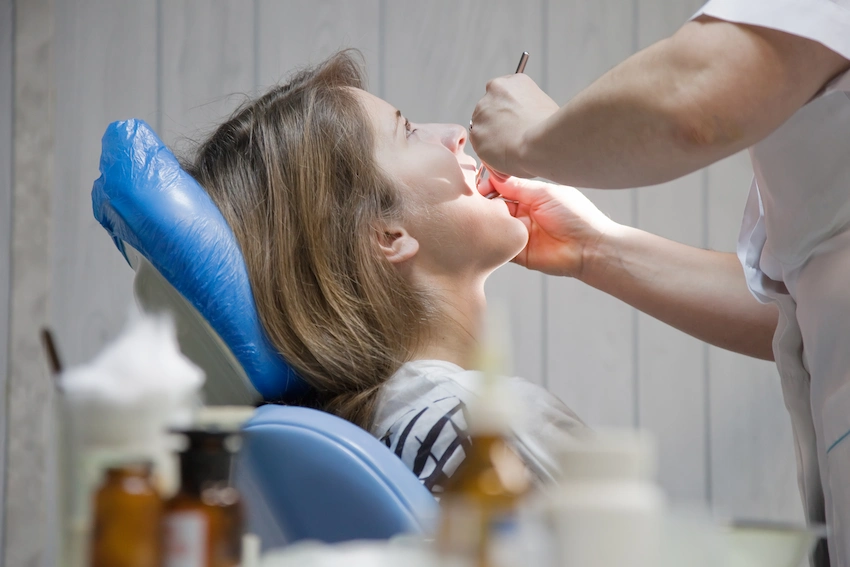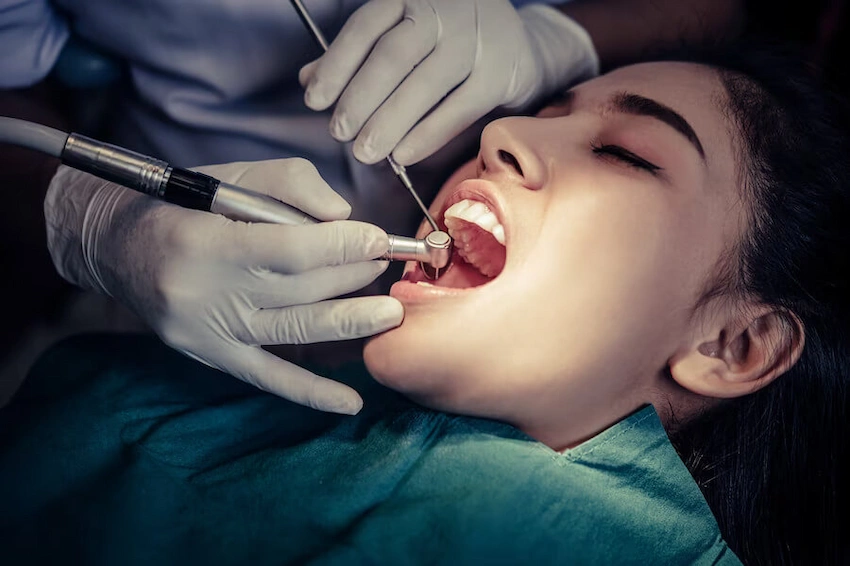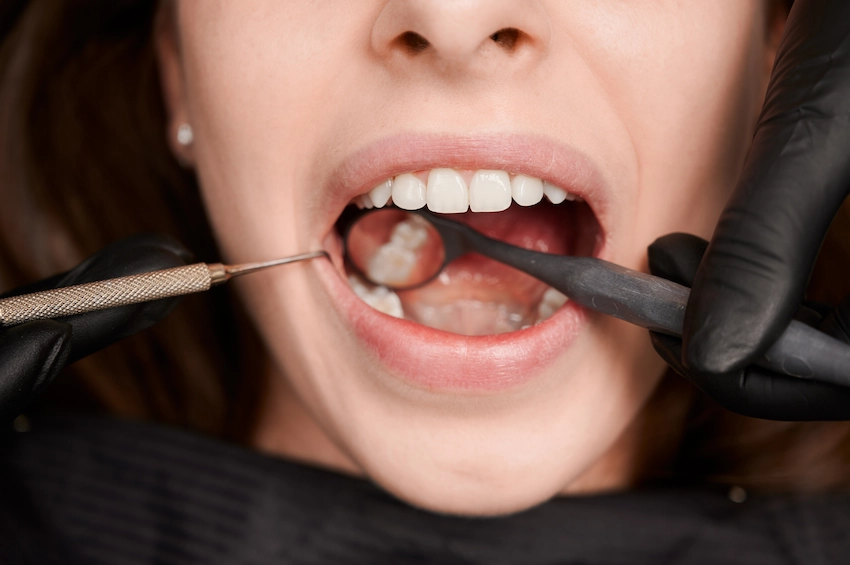Post-Tooth Extraction Recovery Stages

Recovery Stages After Tooth Removal
A person’s gum recovers after the extraction of the tooth. You need to be aware of the recovery stages. Making sure you understand this explanation means you can be on the fast track to recovery. The explanation gives an account of how the extraction is done and what your overall health is like; however, the process, in general, remains the same. The extraction of the tooth, such as the steps, is most entertaining and gives the most essential and fastest understanding.
What Could Be the Main Causes for Tooth Extraction?
Tooth extraction has several reasons, and you need to know these reasons exactly so that you can obtain a clearer picture of the aftermath and also prepare for the post-extraction period. These causes are:
- Severe Decay: This is a situation in which the decay not only cannot be removed but has already spread in one part, and, therefore, the only way out is to extract that particular tooth.
- Overcrowding: Concerning the need for orthodontic treatment like braces or Invisalign, it is required that a few of the teeth be removed to have the necessary space created.
- Gum Disease: As a result of severe and untreated periodontal disease, teeth can become loose; thus, it would be necessary to have tooth extraction carried out.
- Trauma or Injury: The irreparable tooth that has been cracked or broken must be removed.
- Wisdom Teeth: For preventing overcrowding and infection.
The process, whatever the reason behind the extraction is, will, however, be carried out in a manner in which the patient feels maximum comfort. The dentist will attempt to ensure the use of anesthesia to achieve that goal.
When Does the Pain After a Tooth Extraction Go Away?

Pain after tooth extraction is nothing to worry about, as it is absolutely normal to feel pain, especially within the first few days. The level of the pain and the period it lasts could differ, as much as different are two individuals with varying difficulty indices, and completely different sites of tooth treatment, and levels of their pain threshold. Let’s look into a more detailed timeline of the pain to understand what kind of pain you may expect:
- First 24-48 Hours: There is a chance that you will experience moderate pain accompanied by discomfort. Also, swelling will be at its worst at this time. OTC pain relievers such as ibuprofen are of great help in pain management. Only a serious pain problem identified in the immediate medical examination has the possibility of being treated with the prescription drugs given by the dentist.
- 3-7 Days Post-Extraction: The pain may have started to fade, though you may still feel soreness in the immediate area of the extraction. This is expected as the healthful condition of the damaged tissue is being restored. A cold compress pressed against the skin will help you reduce both pain and swelling.
- After 1 Week: At the end of the first week, most of the pain and swelling should be reduced. Nevertheless, if a new, more severe pain is noticed within the same healing area, it is a sure sign of a dry socket or an infection. You are expected to react by navigating to the doctor’s place immediately when they occur.
What are the major events in the first 48 hours following a tooth extraction?
The initial two days after tooth extraction are of paramount importance to the overall healing process. You can gain an advantage by having an idea of the likely occurrences during this time:
- Blood coagulation: The creation of a blood clot in the extraction site is a major step in the wound healing process. The clot ensures the site of the bleeding is covered, and it also protects the bone as well as the nerve endings in the socket. Furthermore, you should be very careful not to remove the clot as the area is rich in blood, which may easily result in clot displacement.
- The area in and around the extraction spot gets swollen: The area of the tooth extraction is usually swollen for the first 24-48 hours without necessarily causing an alarm. Swelling can be controlled by applying ice in the vicinity of the extraction site indirectly, that is, on the part of the face near the extraction site at least 15-20 minutes intervals and 4-5 hours after the removal.
- Your pain level becomes tolerable: On the whole, pain is anticipated to be at a manageable level; if it is not, it could indicate a dry socket condition caused by the dislodged clot. But if the pain is excruciating and throbbing, you are advised to seek help from the dentist without further delay.
Complete the statement below: your attitude towards the patient in the dental clinic and the use of materials, which will speed up healing?
How Many Days Does Recovery Take After a Tooth Extraction?

Recovery time from a dental procedure to full recovery is certainly a matter of several elements, including the complexity of the extraction and whether further procedures, e.g., dental implants or bone grafting, are going to be performed. The recovery period is as follows:
- First Few Days: The wound healing phase, where the period of pulping is 3-7 days initially, which is its period of pulping. The symptoms are gradually decreasing, blood has not been pouring for a while, the swelling is also receding, and the pain is gradually going away. Therefore, you need to stay indoors and avoid stressful activities that can set the body in motion.
- One to Two Weeks: The sores are tapering towards closure, and the pain is decreasing. However, a mild sore might still appear occasionally. It would be better to schedule regular check-ups during this time.
- 3-6 Months: This recovery is over after a period of time that is several months long, following the insertion of the teeth into the already milled bones. At such a point, an osteoconductive incision aid is used to promote healing around the area where the implant points were drilled to allow for new bone material to be added. The bone gradually forms, and teeth and caps are formed and set.
A prompt recovery with such good progress is largely based on your dentist’s guidance. In addition, be mindful of your oral health and avoid any hindering forces that can counteract the healing process.
How Long Will it Take to Recover After a Tooth Extraction?

The time for full recovery varies depending on different situations; it is difficult to estimate exactly how long it will take, such as how difficult the removal is and if another surgery or implant is necessary. The following are the standard recovery directions:
- First Few Days: During these first 3-7 days, regular activity might be resumed. However, the patient should take good rest and avoid strenuous activity. With no blood, swelling should reduce, and pain should be less.
- One to Two Weeks: It is in these few weeks that the sores will stick together and close. Most of the pain should be over; there will, however, be some soreness. During this time, further visits are usually made to give a report of the progress.
- 3-6 Months: In case of supplementary treatments including dental implantation, the bone will require some time, approximately three to six months, to completely heal. It is necessary to note that an implant treated in this regard, i.e, titanium, takes much time to cement to the gums; it may take them 6 months to 8 months, which is known as the osseointegration process.
To ensure the healing process is going well, you should adhere to the instructions of your dentist, keep your oral cavity clean, and neither smoke nor drink alcohol, as it may be detrimental to the recovery.
FAQ: Recovery Stages After Tooth Removal
The most recommended actions after a tooth extraction are not to smoke for at least 72 hours. While smoking, the resulting suction can disturb the blood clot, which in turn can cause dry socket, a very painful condition. Smoking can lead to prolonged and laborious wound healing.
The answer is yes. Yet, the second trimester is the most convenient time. Moreover, it is always recommended that pregnant women consult a dentist and physician to get an agreement that the tooth extraction is safe while they are pregnant, and if at present, it is the most suitable thing to go for.
You can assist in the process of wound healing by keeping your hands off the extraction site. Furthermore, you can take in soft foods, drink a lot of water, and keep yourself away from activities that could make the area uneven, like drinking through a drinking straw or smoking. Also, maintaining oral hygiene and following the method as directed by the dentist could both aid in the healing of the wound.
To avoid bleeding, softly put a clean gauze pad on the spot by biting on it for about 30 minutes. If bleeding does not stop, you can attempt to insert a new gauze pad and keep pressing the area in a gentle way. If the bleeding continues, and the hours of continuous pressing don’t help, or if the bleeding gets to be heavier than it would naturally be for an extraction, get in touch with your dentist immediately.
For effective pain management, you must acquire some over-the-counter pain relievers like ibuprofen or acetaminophen a few hours later, and your pain will be gone. A cold compress is another technique that you can use to deal with swelling on your face, and it can definitely give you relief. At least 24 hours is the time during which the method can have the desired effect.




